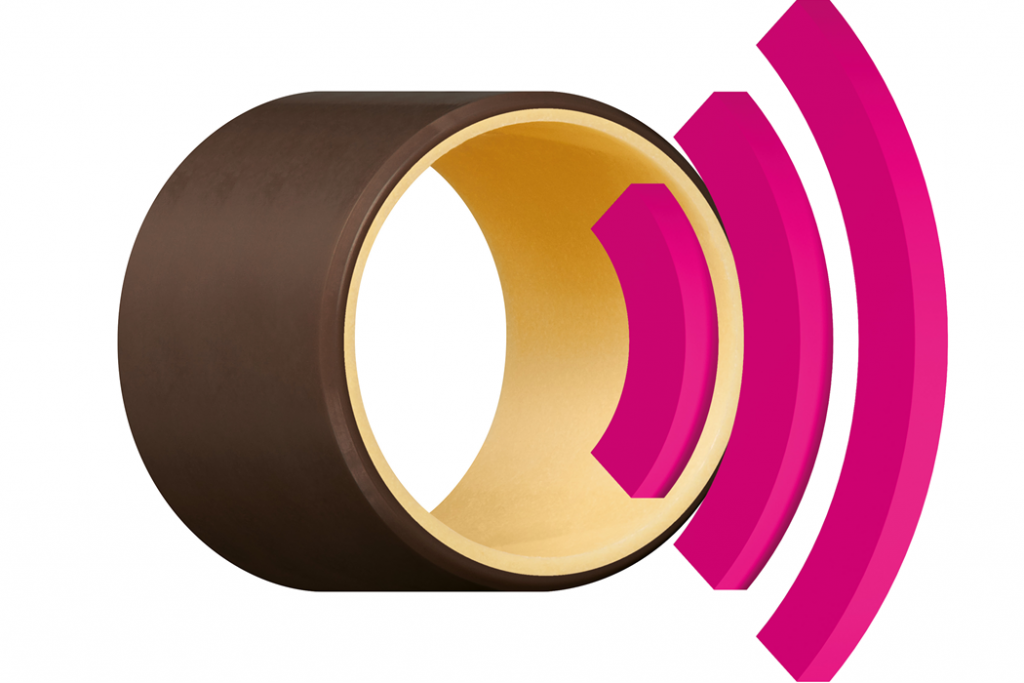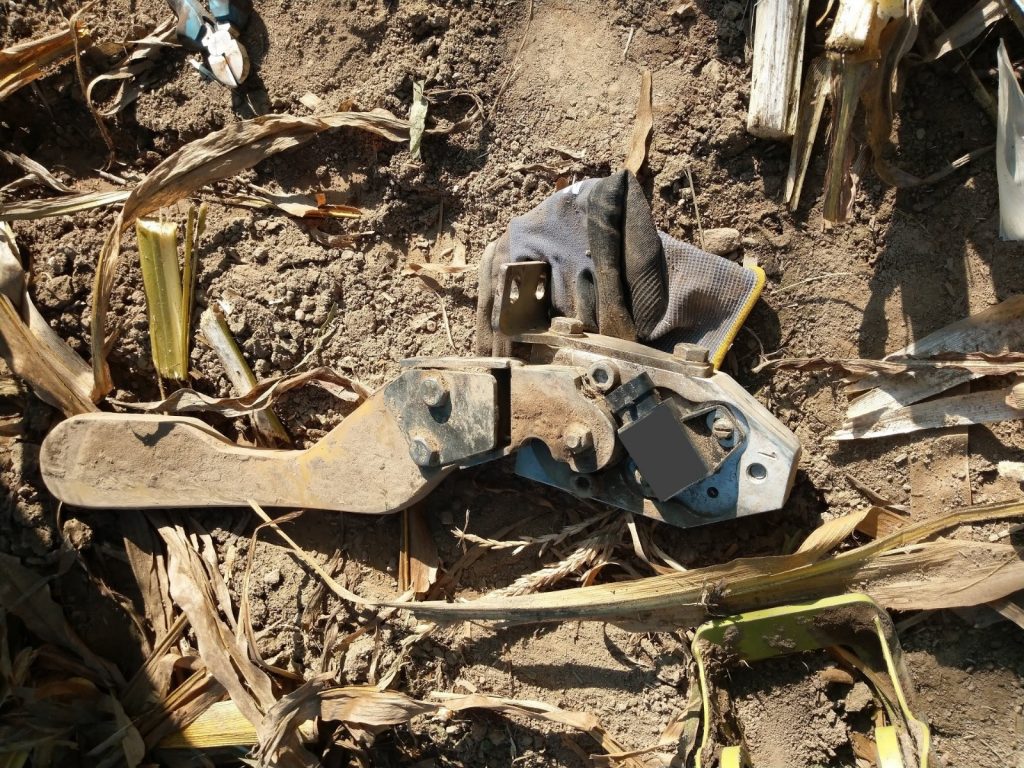What does predictive maintenance mean for plain bearings?
Lars Butenschön | 15. April 2020
I associate the topic of predictive maintenance with a reminder: just under two years ago, my wife gave me a great birthday present. A ride on a maize chopper. She had watched me playing the latest “agriculture simulator” weeks before and wanted to make me happy. (Did you know that the agriculture simulator is one of the best-selling video games in Germany?). The gift was naturally received with great enthusiasm. Already having a healthy interest in machines and vehicles due to professional reasons, the ride on a maize chopper was, of course, something special.
Maize chopper in operation:
In late summer the time had come. Out into the country, pursuing the maize chopper and then finding it in the middle of a maize field. Disillusionment set in when I met some dissatisfied gentlemen standing in front of the cutting unit of the 600 HP monster with tools scattered around the field. Not far away 4 tractors with trailers were in stand-by position. Actually, this monster was supposed to gobble up 9-metre-wide strips of maize at a run, while the 4 tractors alternately drive alongside and carry the uninterrupted stream of chopped maize to the biogas plant. (The chopper has no collecting tank).
And now we were standing here. A maize chopper worth €800,000, 4 tractors with trailers, which together probably cost 2 to 3 times as much … and the 5 not very good-humoured colleagues and me. While for me it was all about the anticipation of a ride-along experience, it was all about cash for the owner of the maize field and especially the contractor.
Be smarter before rather than after?
Like the car driver who constantly receives information on fuel consumption, oil temperature, tyre pressure and many other things while driving, the driver of the maize chopper has access to a whole phalanx of more or less acutely useful telemetry data. This ranges from the amount of maize shredded per second to the average chop size and much more. The monitoring of the various assemblies goes one step further. How strongly does the actuating force of mechanisms change, how much clearance does this and that bearing have. This provides a detailed status picture of the machine in real time. And since such technology must inevitably have a name befitting the world of Internet of Things, block chains and Industry 4.0, this is called condition monitoring.
The usefulness of this detailed data is just as interesting for the driver of the maize chopper during work as the real-time measurement of the bearing clearance on the connecting rod bearing of your combustion engine is for you as a car driver. In fact, this data (whose collection is called “condition monitoring”) is used for other purposes.
The usefulness of this data may become clear if we continue to listen to the driver of the chopper. While hundreds of maize plants simply disappear under our “cockpit” at a completely surreal speed, I asked – of course completely off the beaten track of professional interests – how it actually works with maintenance. Unlike the car, it is probably not enough to change the oil once a year. Yes, that’s right: the device should actually be cleaned every evening and the bearings greased! Should. Generally speaking.
The maize does not “wait” – Choose the right time for maintenance
Because the maize won’t wait. And neither would the bank. So, not only does the maize have to be harvested quickly, but the investment must also pay off quickly. So the chopper operates day and night. Nevertheless, at some point you just MUST turn off the appliance and clean and lubricate it. Referring to the car example, probably the most frequently asked question to vehicle mechanics: “How long can I still drive with it”. And just as the chopper driver has been driving a chopper for 20 years and knows from experience that every other day is okay (good, except for the little problem just now in the field), the car mechanic also answers that “more than 100km are not okay”.
The challenge is therefore to carry out maintenance when it is REALLY necessary. So while the user wants to carry out maintenance as rarely as possible (i.e. long maintenance intervals) and often relies on experience, the manufacturer specifies the shortest possible maintenance intervals. Of course, the manufacturer also knows that maintenance costs money and is a disadvantage for the user. Nevertheless, the equipment must be dependable and reliable – which is not possible without regular maintenance. Under no circumstances can any manufacturer afford to have the device fail in positions due to lack of maintenance, even if the maintenance schedule is followed.
The next step: condition monitoring leads to “predictive” maintenance
The next technical coinage.The term predictive maintenance is used, as such, in German as well. For the equivalent term in German does not sound the same. The condition monitoring described above generates vast amounts of data, which the operator – or humans in general – can hardly collect, evaluate and interpret at sufficient speed. This is where “predictive maintenance” comes in with automatic algorithms and self-learning systems. The concept: the experience that the chopper driver and the car mechanic have gained over the years, through testing and learning, can be accumulated in a much shorter period of time through computer learning and formulating it in precise predictions. And not as a blanket statement, but taking into account the current condition of the respective equipment. After all, the brakes of your car will last much longer if you don’t have to drive like the devil every day and constantly apply the brakes.
The bottom line is that predictive maintenance is a good thing. Computers take over the permanent viewing of any semi-helpful telemetry data and instead provide individualised information as to when this or that bearing should be replaced. And not when I am standing on the field in the back of beyond, but when it is suitable.
With iglidur® isense to the “predictive” plain bearing

Predictive maintenance is not only useful for the maintenance of vehicles and agricultural machinery, but generally for machines and equipment that have to run as continuously as possible and without unplanned interruptions. Plain bearings are often cheap items that can incur high costs not only by replacing them too late but also too early. This is the case when the bearing point is difficult to reach or when the device must generally be out of operation for a longer period for replacement. Intelligent plain bearings can provide planning and supply reliability here. In addition, the often laborious troubleshooting is easier if damage can be located more quickly by condition monitoring.
The service life of iglidur® plain bearings can be calculated in advance for many years with the iglidur® online expert. For the data collection – i.e. the condition monitoring – igus® has collected from more than 10,000 tribological test set-ups annually over 30 years. With iglidur® isense, this condition monitoring is introduced into the customer’s application. With the information gathered on the ground, it is now possible to gather even more precise and specific information and make appropriate recommendations. These individual recommendations are extremely valuable for the efficient planning of maintenance and replacement.
Interested? Contact us! We will be happy to advise you and work out the most favourable and suitable solution for you.
PS: for all those who were as affected by the fate of the maize chopper as I was, the damage was caused by a defective sensor that measures the distance between the cutting unit and the ground. The “closer” you cut along the ground, the more of the maize plant can be used. The sensor could not be repaired on site and had to be replaced in the evening. But that did not dampen my riding experience, nor did it stop the driver from harvesting the maize. With enough experience you know not only when to service the machine, but also how to keep the cutter bar as close to the ground as possible 🙂

